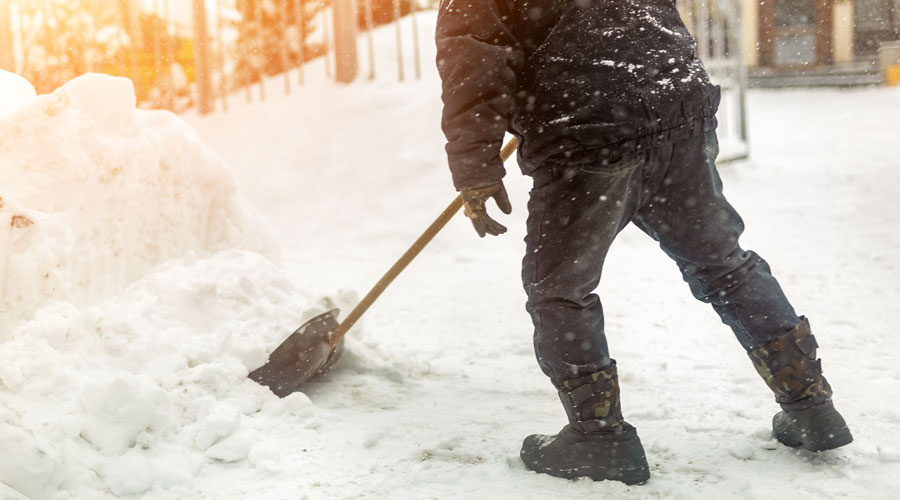
January 23, 2024
Snow Shovelling Safety Tips
Although shovelling snow on the job can help clear pathways and prevent ice buildup, this task comes with serious safety risks. After all, repeated shovelling requires significant physical exertion, which—when paired with the frigid outdoor elements—can take a dangerous toll on your body. That’s why it’s crucial to understand the risks and utilize proper precautions while you shovel snow.
The most prevalent risks associated with shovelling snow include the following:
- Sprains and strains—Because shovelling requires you to move potentially heavy amounts of snow in an awkward position for an extended period, this task can easily cause sprains and strains if you aren’t careful. These injuries typically occur in your wrists, shoulders, back and ankles.
- Frostbite—Working in chilly conditions can also increase your risk of developing frostbite, which entails a freezing of the skin and its underlying tissues. Frostbite can result in stinging, numbness and blistering in the affected areas (usually your fingers, toes or face). If left untreated, frostbite can cause permanent tissue damage.
- Heart complications—If you overexert yourself while shovelling snow, the cold weather could contribute to a sharp rise in your heart rate and blood pressure, thus decreasing your overall blood supply and potentially causing a heart attack—which could be fatal.
Here are some basic guidelines to keep in mind when shovelling snow at work:
- Avoid shovelling right after eating or while smoking.
- Take some time to stretch before you begin shovelling to prepare your body for the physical demands of the task.
- Try to push the snow instead of lifting it. If you must lift snow while shovelling, use a smaller shovel or only partially fill your shovel with snow to avoid lifting too much at a time. In addition, be sure to lift with your legs rather than your back.
- Don’t overexert yourself. Pay attention to how you feel while you shovel—never work to the point of exhaustion. If you begin to feel overly fatigued, stop shovelling and inform your supervisor.
- Consider utilizing a snowblower rather than a shovel when handling large amounts of snow. However, make sure you are properly trained to do so. Consult your supervisor before making any equipment changes.
- Make sure you know the key signs of a heart attack (e.g., chest discomfort, shortness of breath, and pain in the arms, back, neck, jaw or stomach). If you start to experience these symptoms, stop shovelling and call 911 (or ask someone to call for you, if necessary).
For more information on risk management or to find out how to reduce your insurance costs call CMB at 780.424.2727 or click here to get a quote.
